#thomas y. crowell company
Text

June Jordan, Fannie Lou Hamer, (back cover, photograph by June Jordan), Illustrated by Albert Williams, Thomas Y. Crowell Company, New York, NY, 1972
Plus: June Jordan, Mississippi 'Black Home', The «New York Times», October 11, 1970
#graphic design#photography#illustration#book#book cover#june jordan#fannie lou hamer#albert williams#thomas y. crowell company#crowell#the new york times#1970s
63 notes
·
View notes
Text
Then a great shout went up from the men of Ulster, and their warrior spirit began to revive in them. And to each in turn the King applied, bidding him go forth and summon his clan and followers to meet him that day week upon the Hill of Slane in Meath, for he himself would call a muster there.
Gladly and eagerly the chiefs issued forth, for they heard the sounds of stirring men and the welcome bark of the hounds without.
As for the King himself, his mind was so confused with the magic sleep in which he had lain, that he remembered not the dead from the living, but stood, calling on the dead to come to his aid, as though they had been yet alive.
Throughout all the land he sent heralds to call together his men-at-arms ; and with one heart and mind the men of Ulster responded to his call. Troop on troop they flocked to Emain, from North and West and East, each mighty leader surrounded by his host clad in the kilt and colours of his clan. As for the clans that were south of Emain, they tarried not to assemble at the kingly fort, but made their way, each by his own route, straight forward to the Hill of Slane.
For after their long rest and weakness their hands itched to be upon their swords again.
Hull, Eleanor. "Chapter XVI: Ulster, Awake!" The Boy's Cu Chulain, Thomas Y. Crowell Company, 1910
2 notes
·
View notes
Link
Check out this listing I just added to my Poshmark closet: ❤️ If I Were a Cricket....
0 notes
Text
“STUDENT” AS A COMMONPLACE, I
[Currently, this blog is continuing its account of the liberated federalism model of governance and politics.[1] As a reminder for readers, this blog posts twice a week – on Tuesdays and Fridays.]
Using William Schubert’s commonplaces of curriculum development,[2] this blog has just completed reviewing the commonplace, subject matter, as it applies to the liberated federalism construct, and will commence with the commonplace, students. This blog asks: what is known about the nature of students in relation to the principles of liberated federalism?
The postings that follow contain claims and evidence regarding the nature of the construct. They share various conclusions that can be derived from the elements of the construct’s view and that support the implementation of its ideas and ideals insofar as the construct relates to students. In turn, that will help establish it, liberated federalism, as the foundational basis for the teaching of American government and civics in secondary schools.
Some of the issues to be addressed directly pertain to the individual interests of students; others will deal with long term interests that affect youths in general or the conditions of students within the wider society. The upcoming review will address the following areas of concern: student interests, student problems, and student educational requisites. It will answer the following questions:
What personal student interests benefit from using the liberated federalist construct in the teaching of government and civics at the secondary level?
What social student interests benefit from using the liberated federalist construct?
What economic student interests benefit from using the liberated federalist construct?
What political student interests benefit from using the liberated federalist construct?
What pedagogic student interests benefit from using the liberated federalist construct?
What follows in the following postings is not an extensive inquiry into these issues (each can be the topic of extensive study), but a general review which sufficiently helps justify the adoption of the liberated federalist construct to guide civics content.
Again, the liberated federalist model relies on the political theoretical school of thought generally known as federalism. It is an approach to governance and politics that sees, as favorable, the establishment of polities through a process in which the affected people come together and formulate, under a sacred agreement – a compact – to establish a set of aims, a listing of values, usually in the form of rights both for individuals and groups, a structure for governance with chief processes identified, other points of agreement, provisions for cases in non-compliance, and the signatures of those agreeing to the compact.
If the agreement calls on God to witness it, that compact is a covenant. The word federalism is derived from the Latin word for covenant, that being foedus.[3] Federalist ideas and ideals have been part of American history all the way back to the nation’s earliest colonial days – for example, the Mayflower Compact is a covenant. This blog has in the past described and explained the role that federalism has played in the development of the United States.[4]
[1] For readers who wish to review those corresponding postings, they are guided to this blog’s posting, “From Natural Rights to Liberated Federalism” (June 2, 2023), at the URL, https://gravitascivics.blogspot.com/, where this series begins.
[2] William H. Schubert, Curriculum: Perspective, Paradigm, and Possibility (New York, NY: MacMillan Publishing Company, 1986).
[3] Daniel J. Elazar, “Federal Models of (Civil) Authority,” Journal of Church and State, 233-234.
[4] Two works that give readers a well-rounded overview of federalism are Daniel J. Elazar, American Federalism: A View from the States (New York, NY: Thomas Y. Crowell Company, 1966) AND Daniel J. Elazar, Exploring Federalism (Tuscaloosa, AL: The University of Alabama Press, 1987).
#federalism#liberated federalism#students#personal interests#social interests#political interests#economic interests#pedagogic interests#civics education#social studies
0 notes
Text
arguments, other ways than
...just have to find other ways than arguments in which to beat him.
If your husband fancies himself a cook, stay out of the kitchen when he [makes?] a meal. You don’t like to have him puttering
ex Manners of the Moment, “by Jean” (New York: Thomas Y. Crowell Company, 1938) : 51 : link (snippet only)
full view (U Minn copy/scan, via hathitrust) : link
more on Jean D. Lyon (1902-1960) — her life and writing — at 319a
0 notes
Photo








Staff Pick of the Week
I chose this book for my Staff Pick because of the striking nature of the illustrations. When I think of Walt Whitman, I usually think of a sort of bucolic, idealized Americana, which is not necessarily what these images are giving me. I’m not a great fan of Whitman for many reasons (including his depiction of an idealized America), but this edition of Leaves of Grass caught my eye while I was verifying the catalog record.
This edition was published in 1933 by Thomas Y. Crowell and Company in New York. It is a selection of poems from Leaves of Grass rather than the full “finished” text—Leaves of Grass was first published in 1855 as a collection of 12 poems and continued to be revised and expanded through several editions until its “final” form in 1892 that included almost 400 poems. The poems in this edition were selected by American artist Charles Cullen (not the serial killer or the Irish artist of the same name).
I wasn’t able to find much information about Cullen, save for one post about his work on Princeton’s Graphic Arts Collection website and the information on the book’s dust jacket. Charles Cullen was born in LeRoy, New York in 1889. He worked as an illustrator for Scribner’s, Century, and Collier’s. He illustrated four books by American poet Countee Cullen: Copper Sun, The Ballad of the Brown Girl, an illustrated second edition of Color, and The Black Christ and Other Poems. In 1928, the overtly sexual Mimes of the Courtesans, was published with illustrations by Charles Cullen by The Press of Classic Lore and then republished in 1931 by Rarity Press. Charles Cullen’s edition of Leaves of Grass followed this publication in 1933.
Cullen’s illustrations are quite striking—loaded with contrast and strong imagery. Each illustration is intended to illustrate a line from a poem in the book. To me, the sharp, graphic images somewhat conflict with Whitman’s more natural, flowing poetry, which is partially why I find them so interesting! The very modern aesthetic of the art deco images provides a contrast to (many of) the poems. I also like the image illustrating “O Captain! My Captain!’ which features a ghost Abraham Lincoln wrapped in an American flag and what might be drips of blood.
The article on Princeton’s Graphic Arts website hints that Charles Cullen was gay and many have speculated that Whitman was also gay or perhaps bisexual, partially due to the Calamus poems in Leaves of Grass. Whitman during his lifetime dodged the question when asked and claimed to have fathered 6 illegitimate children, though there’s no evidence to support this. Regardless, it seems that Cullen at least found something relatable in Leaves of Grass and chose it as a work to illustrate and spend time with. The back flap of the dust jacket says that "for the next six years this work engrossed much of his leisure time. As he says: ‘In Leaves of Grass, Whitman’s great sweeping lines lent themselves to full and satisfying illustrations, although I was often obliged to select the most important of his countless word pictures for a composite drawing.’”
Our copy is signed by Charles Cullen with the note “This is a copy of the first edition,” and was acquired as part of large donation of Whitmaniana from local collector and librarian Jim Van Ess.
View more posts featuring Walt Whitman.
View more Staff Picks.
- Alice, Special Collections Department Manager
#Walt Whitman#Leaves of Grass#Charles Cullen#Thomas Y. Crowell and Company#Modernism#graphic arts#contrast#Staff Pick of the Week#Art Deco#Alice#illustrated books#20th century books
166 notes
·
View notes
Text
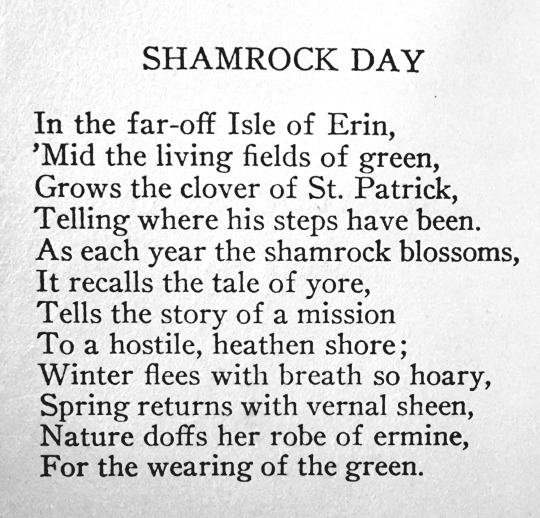
From our stacks: Poem "Shamrock Day," from The Book of Holidays By J. Walker McSpadden. New York: Thomas Y. Crowell Company, 1917.
#shamrock day#poem#books#library books#st. patrick's day#poetry#wearing of the green#st. patrick#st. paddy's day#shamrock#poems#book#library book#detroit public library
106 notes
·
View notes
Text
The Disappearance of Joan Risch
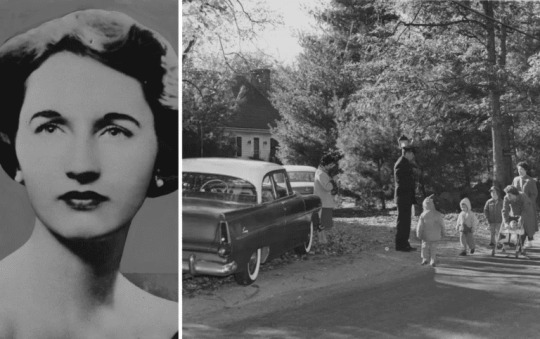
October 26, 2021
Joan Risch (Joan Carolyn Bard) was born in Brooklyn, New York, in 1930 to parents Harold and Josephine Bard. Her family moved to New Jersey when Joan was 9, and in 1940 both of her parents died in what was described later as a suspicious fire.
It was reported that Joan had later told a friend that she had been sexually abused as a child, and after the fire she had moved in with relatives who had formally adopted her. Joan took the relatives last name, Nattrass, and had applied for a social security number under that name.
Joan graduated in 1952 from Wilson College in Pennsylvania with a degree in English literature and she later went to work in publishing. She began working as a secretary, later moving to supervise the secretarial pool and after that became the editorial assistant at Harcourt Brace and World and later at Thomas Y. Crowell Co. In 1956 she married Martin Risch, an executive at one of the companies and left work to raise her family.
The couple lived in Ridgefield, Connecticut, where they had their first child, a daughter named Lillian in 1958 and then a son named David in 1959. In 1961, the couple moved to Lincoln, Massachusetts. Joan became active in the League of Women Voters and Martin worked with the Fitchburg Paper Company. Joan had dreams to pursue teaching when her children became older.
On October 24, 1961, Martin Risch woke up early and left the house to catch an 8 am flight to New York for a business trip he had planned. He was going to be staying the night in Manhattan. Shortly after Martin left, Joan woke the children up and gave them breakfast. She took David across the street to a neighbour’s house, Barbara Barker, and then took Lillian in her blue 1951 Chevrolet for a dentist appointment.
After the appointment, Joan took Lillian shopping at a nearby department store and paid for their items in cash. Milk and the mail had been delivered to the Risches home while they were gone. Neither the milkman or postman reported seeing anything unusual.
Joan picked up David and then they all returned home around 11:15 am. Shortly after, a delivery driver for a dry cleaner came to the house to pick up some of Martin’s suits. He entered the house and did not notice anything strange about Joan. After the delivery man left, Joan changed from her formal clothing to a blue housedress and white sneakers.
Joan made the children lunch and put David into his room for his nap, which always lasted until 2 pm. At 1 pm, Barbara Barker, the neighbour, brought her son, Douglas over to play with Lillian. During this time, Joan was seen coming in and out of the house to prune some plants.
Shortly before 2pm Joan came out and took the children across the street to the Barker’s house. She told them she would be back. Lillian later told police she did not see anyone else in the area at the time and that she and Douglas had played on a swing set, though they could not see the Risch house from where they were playing.
Around 2:15 pm, Barbara briefly saw Joan, wearing what looked like a trench coat over her clothes and moving quickly up her driveway, carrying something red and outstretched in her arms from her car to the garage. This was the last confirmed sighting of Joan Risch.
An hour later, Virgina Keene, the daughter of the Risches’ next door neighbours, got off the school bus and as she got closer to her house she noticed an unfamiliar car, that was dirty and two-toned with one of the colours being blue. Five minutes later, another local said they stopped while driving up Old Bedford to let a car back out of either the Keenes’ or the Risches’ driveway. Both Virginia and her mother said there was no car in their driveway at that time.
Barbara took Lillian back home at 3:40 pm, because she was going to take her children out to shop. She believed Joan was in the house, so she left. When she returned from shopping at 4:15 pm, Lillian came back over and said that her mother was gone and that the kitchen had been covered in red paint. David had been crying in his crib because his diaper needed to be changed. Barbara ran over to the house, and confirmed what Lillian had told her. She called the police at 4:33 pm.
Sgt. Mike McHugh arrived at the Risch residence within 5 minutes. In the kitchen he found the bloody smears on the walls, the table overturned and the handset of the wall-mounted telephone ripped loose and thrown in the wastebasket, which was in the middle of the floor, not under the sink in it’s usual place.
McHugh thought Joan may have taken her own life and searched the house for her body. He did not find it and realized he would need more help, this was not going to be an open and shut case. The police department called local hospitals and said to keep an eye out if a woman matching Joan’s description show up. Martin Risch was notified of what was going on and got on the next flight back to Boston.
In the house, police found 4 letters delivered to the mailbox that had yet not been brought inside. In the kitchen, the telephone directory was found to have been opened to the page where emergency numbers could be written down, though no numbers had been written down. There was an empty liquor bottle found in the wastebasket, but Martin claimed him and his wife had finished it the night before, though he could not explained the empty beer bottles that were also found.
Joan had left the trench coat she had worn earlier in the morning and appeared to have left somewhere wearing a plainer cloth coat. Her pocketbook was also found in the house and police determined she would’ve had less than $10 ($90 in today’s time) left.
Several people reported that they had seen Joan after Barbara Barker had last seen her the afternoon of October 24. At 2:45 pm, a woman wearing clothing similar to what Joan had last been seen in, was seen walking along the north side of Route 2A west of its junction with Old Bedford, heading toward Concord. The woman had a kerchief over her head tied around her chin and appeared to be hunched over as if she were cold. The woman appeared untidy.
Another similar looking woman to Joan was scene with blood running down her legs, walking north on the Route 128 median strip in Waltham between 3:15 and 3:30 pm just north of Winter Street. The woman appeared disoriented and was cradling something at her stomach. Another person reported seeing the woman walking south along Route 128 near Trapelo Road around 4:30 pm.
Police received reports of the car that Virgina Keene had reported in the Risches driveway. The milkman claimed to have seen it there when he made his morning delivery. Another resident told police she had seen a blue two-toned car parked on Sunnyside Lane, at 4:15 pm. She witnessed a man get out of the car, cut some branches from the nearby woods, and put them in the car. Another man said he saw a light blue 1959 Ford sedan parked along Sunnyside at 2:45 pm.
Though there was tons of blood in the Risch kitchen, police could not determine from where the blood might have been from. Large smears were on the walls and the floor, as well as some found on the telephone. Three bloody fingerprints were unidentified, and police were unable to see if they matched Joan’s as she was gone. A roll of paper towels was on the floor, one had been used to wipe up some blood.
A coverall and pair of underpants belonging to David were also on the floor, covered in blood, possibly from an attempt to wipe some of it up. The coverall looked like it had been pressed into the floor, as if a heavy weight had lain on them for a while, possibly a body. Police said that the bloodstains might have been a result of a struggle, but that it mostly likely was from someone staggering around and trying to support themselves following an injury.
Blood was also found outside the house, a 1/8 inch wide drop was found on the first step of the stairway. Two more similar sized drops were found at the top of the stairs, along with 8 drops found in the master bedroom and one near a window in the children’s bedroom.
A trail of blood led out of the kitchen into the driveway and ended at Joan’s car, which was stained in three places: the right rear fender, the left side of the hood, and the very centre of the trunk. It could not be determined where the bleeding actually started. Some believed Joan had been carried out of the house against her own will and placed in another car.
There was no bloody footprints found despite the amount of blood. The blood was found to be Type O, the most common blood type and it was said that this was Joan’s blood type. A police chemist determined the the amount of blood was also half a pint, not enough to have been from a life-threatening injury.
Sareen Gerson, a reporter, went into the local library to research similar cases and came across a book about the disappearance of Brigham Young’s 27th wife, which Joan Risch had checked out the book in September, a month before she disappeared. Another book was about a woman who went missing and left behind blood smears and a towel. Gerson saw that Joan had also checked out this book.
Gerson reported these findings in the newspaper, and volunteers looked through records, discovering that Joan had taken out 25 books over the summer of 1961, many of which had to do with murders and missing people. Due to this, some believe that Joan had staged her own crime scene and disappeared purposely.
Police determined that Martin Risch, the mailman and the milkman had all been elsewhere during Joan’s disappearance. Police looked into a man named Robert Foster, as neighbours believed he was suspicious. Foster had been known to visit homes in the area discussing a project to restore the area back to its historical appearance from the Revolutionary War. Some women told police that Foster had “overstayed his welcome” while visiting homes to discuss this project. Foster had visited Joan Risch on September 25, almost exactly a month before she went missing.
On the day Joan disappeared, Foster told detectives that he went out for lunch with his supervisor around 1 pm. By 3 pm, he went back to the Lincoln area to meet with a property appraiser. This alibi was completely confirmed.
Martin Risch continued to live in the house and raise the children. He never had Joan legally declared as dead. Eventually, Martin moved to a house in Lexington and died in 2009.
There are many theories about what happened to Joan Risch, with many believing she wanted to run away from her life. Though, a friend of hers said that Joan was very satisfied with her life and wouldn’t of had a reason to run away. Martin proposed that maybe his wife had an amnesia episode or a psychological breakdown and forgotten how to return home. Joan had no history of mental illness.
There was another popular theory, that Joan was pregnant and had died as a result from a botched abortion performed in her house. Some believe the blue two-toned car that many saw, belonged to a person who had come to perform the abortion and that at some point something had gone wrong. The loss of blood may have disoriented Joan, where she had stumbled around the kitchen trying to call 911 but had been stopped possibly. This also matches up with the police thinking she may have been carried from the house to a car in the driveway and driven off. This matches the blood trail that led outside the house and stopped in the driveway. This also would describe Barbara Barker, who claimed she saw Joan wearing a trench coat and carrying something red.
None of this has ever been confirmed, it is unknown if Joan was pregnant, and none of the reported sightings of her walking along the road make sense. Why would she be walking along the road?
It is unlikely that the whereabouts of Joan Risch will ever been known, as the last investigator on the case died in 2009, and most people involved would probably be dead. If Joan was alive today and had left her old life behind, she would be 91 years old.
44 notes
·
View notes
Photo

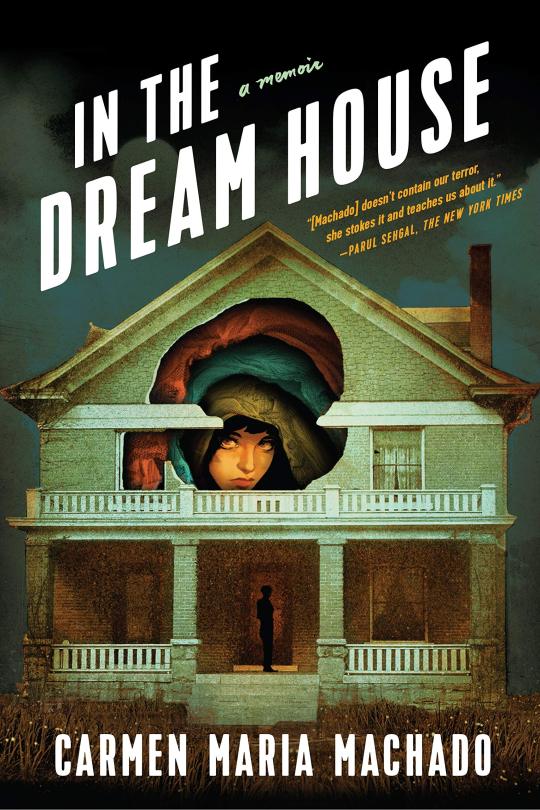

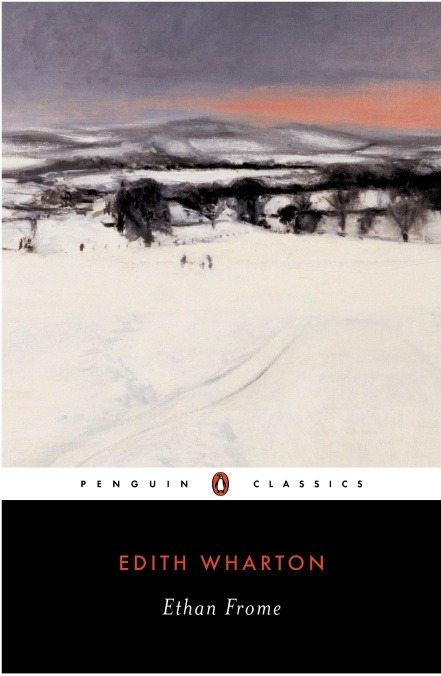
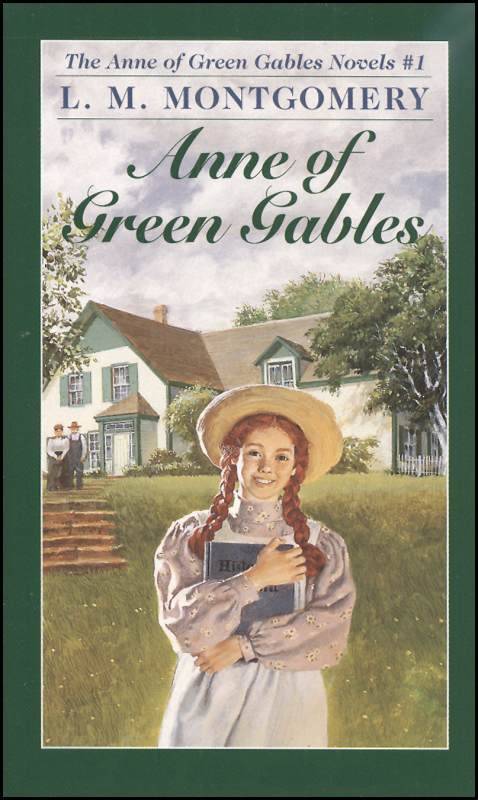

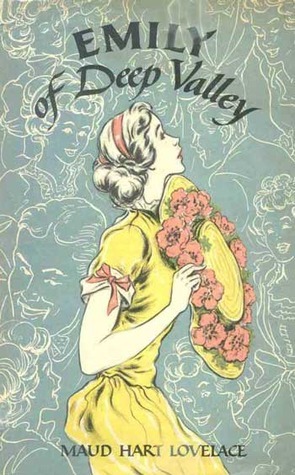


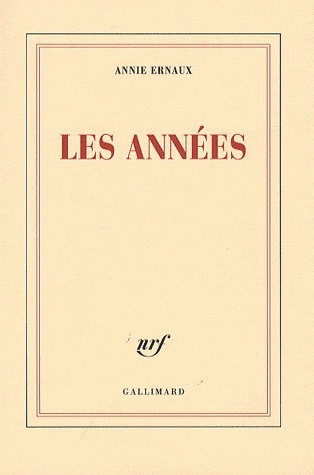
Some Memorable Reading from 2020
William Trevor, Angels at the Ritz (1979, Penguin)
Carmen Maria Machado, In The Dream House (2019, Graywolf Press)
Tove Ditlevsen, Childhood, Youth, Dependency (1967-1971, Steen Hasselbalchs Forlag)
Edith Wharton, Ethan Frome (1911, Scribner’s)
L.M. Montgomery, Anne of Green Gables (1908, L.C. Page & Co.)
Magda Szabó, Abigail (1970, Móra Ferenc Könyvkiadó)
Maud Hart Lovelace, Emily of Deep Valley (1950, Thomas Y. Crowell Company)
Patricia Highsmith, Deep Water (1957, Harper)
Dominique Morisseau, Skeleton Crew (2016, Samuel French)
Annie Ernaux, The Years (2008, Gallimard)
#William Trevor#Carmen Maria Machado#Tove Ditlevsen#Edith Wharton#L.M. Montgomery#Magda Szabó#Maud Hart Lovelace#Patricia Highsmith#Dominique Morisseau#Annie Ernaux#2020#EOY
9 notes
·
View notes
Photo






Self help books existed back in the day too!
Things To Live For
By J. R. Miller, D.D.
Author Of "Silent Times," " Making The Most Of Life,"
"Building Of Character," Etc.
"Life Is A Sheet Of Paper White
Whereon Each One Of Us May Write
His Word Or Two, And Then Comes Night."
–Lowell
FIRST EDITION
VICTORIAN BINDING
SELF-HELP
Publisher: Thomas Y. Crowell & Company, New York
Copyright: 1896
BUY ON ETSY
#self help#books#old books#booklife#books and libraries#bookaddict#booklover#books and literature#antiquarian books#inspiration#life inspiring quote
22 notes
·
View notes
Text

Myths and Legends of the Celtic Race by T. W. Rolleston
Thomas Y. Crowell Company
New York
1909
Artist : Stephen Raid
MIDIR AND ETAIN
#stephen raid#celtic mythology#celtic legends#children's literature#children's illustration#children's books#children's book#vintage illustration#old illustration#midir and etain#midir#etain
440 notes
·
View notes
Text

From: June Jordan, Fannie Lou Hamer, Illustrated by Albert Williams, Thomas Y. Crowell Company, New York, NY, 1972
Plus: June Jordan, Mississippi ‘Black Home’, The «New York Times», October 11, 1970
#graphic design#illustration#book#june jordan#fannie lou hamer#albert williams#thomas y. crowell company#crowell#the new york times#1970s
13 notes
·
View notes
Photo

How Mr. Rhodda Broke the Spell. Mark Guy Pearse. New York [and] Boston: Thomas Y. Crowell & Company, [1899]. First (first separate?) edition.
A short supernatural romance by a Methodist minister born in Cornwall who wrote a large quantity of didactic fiction for young readers. A stubborn, devoutly religious widower suffers ill fortune and sickness by being "ill-wisht." He reluctantly consults a white witch who tells him he must discover who cursed him and "draw her blood." After considerable anguish and torment, he does so and finds joy and love.
9 notes
·
View notes
Link
Check out this listing I just added to my Poshmark closet: ❤️ If I Were a Cricket....
0 notes
Text
Some sources, for anon who asked about Oceanian/Polynesian folklore and astronomy-related environmental knowledge:
-
Alencar, Victor Aves. “Sky Observation and Mythology: Paths to an Astronomical Culture.” Proceedings of the International Astronomical Union Volume 5 Issue S260, 207-212.
Alpers, Antony. Legends of the South Sea: The World of the Polynesians seen through their Myths and Legends, Poetry and Art. New York: Thomas Y. Crowell Company, 1970.
Edwards, Edmundo. “Astronomically-aligned Religious Structures on Raiatea and Raivavae and the Matariki Festival of 1770 on Easter Island.” Proceedings of the International Astronomical Union Volume 7, Symposium S278 (2011).’
Filihia, Meredith. “Shamanism in Tonga: An Assessment.” The Journal of Polynesian Society 117:4 (2008).
Finney, Ben. “Myth, Experiment, and the Reinvention of Polynesian Voyaging.” American Anthropologist 93:2 (1991).
Gladwin, Thomas. East is a Big Bird: Navigation and Logic on Puluwat Atoll. Cambridge, Massachusetts: Harvard University Press, 1970
Goto, Akira. “Archaeoastronomy and ethnoastronomy in the Ryuku Islands: A preliminary report.” Proceedings of the International Astronomical Union Volume 7, Symposium S278 (2011).
Grimble, Arthur. “Gilbertese Astronomy and Astronomical Observations.” Journal of the Polynesian Society 40 (1931).
Grimble, Arthur. Migrations, Myth and Magic from the Gilbert Islands. London: Routledge, 1972.
Groube, L.M. “Tonga, Lapita Pottery, and Polynesian Origins.” Journal of Polynesian Society 80:3 (1971).
Gunson, Niel. “A Note on Oceanic Shamanism.” Journal of the Polynesian Society 119:2 (2010).
Hamacher, Duane W. and Ray P. Norris. “‘Bridging the Gap’ through Australian Cultural Astronomy.” Proceedings of the International Astronomical Union Volume 7, Symposium S278 (2011).
Kahn, Miriam. “Tahiti: The Ripples of Myth on the Shores of the Imagination.” In History and Anthropology 11:4 (2003).
Kalakaua, His Hawaiian Majesty King David. “Hina: The Helen of Hawaii.” In The Legends and Myths of Hawaii. Edited by R.M. Daggett. Honolulu: Mutual Publishing, 1997.
Lessa, William A. “Origins.” In More Tales from Ulithi Atoll: A Content Analysis. Edited by William A. Lessa. Berkely: University of California Press, 1980.
Lewis, David. “A Return Voyage between Puluwat and Saipan using Micronesia Navigational Techniques.” Journal of Polynesian Sociology 80:4 (1971).
Lewis, David. “Voyaging Stars: Aspects of Polynesian and Micronesian Astronomy.” Philosophical Transactions of the Royal Society of London: Series A, Mathematical and Physical Sciences 276:1257 (1974).
Lewis, David H. We, the Navigators: The Ancient Art of Landfinding in the Pacific. London: Angus and Robertson, 1972.
Makemson, Maud Worcester. The Morning Star Rises: An Account of Polynesian Astronomy. New Haven: Yale University Press, 1941.
Malnic, Jutta with John Kasaipwalova. Kula: Myth and Magic in the Trobriand Islands. Wahroonga, NSW: Cowrie Books, 1998.
Nunn, Patrick D. “Fished Up or Thrown Down: The Geography of Pacific Island Origin Myths.” Annals of the Association of American Geographers 93:2 (2003).
Nunn, Patrick D. “On the Convergence of Myth and Reality: Example from the Pacific Islands.” The Geographical Journal 167:2 (2001).
Oliver, Douglas L. Ancient Tahitian Society: Social Relations. Honolulu: University of Hawaii Press, 1974.
9 notes
·
View notes
Photo

The Annotated Jules Verne: Twenty Thousand Leagues Under the Sea Jules Verne, 1870 foreword and annotations: Walter James Miller, 1976 Thomas Y. Crowell Company, US, 1976 ex libris signature on first leaf: Ralph Francis Barrick
1 note
·
View note